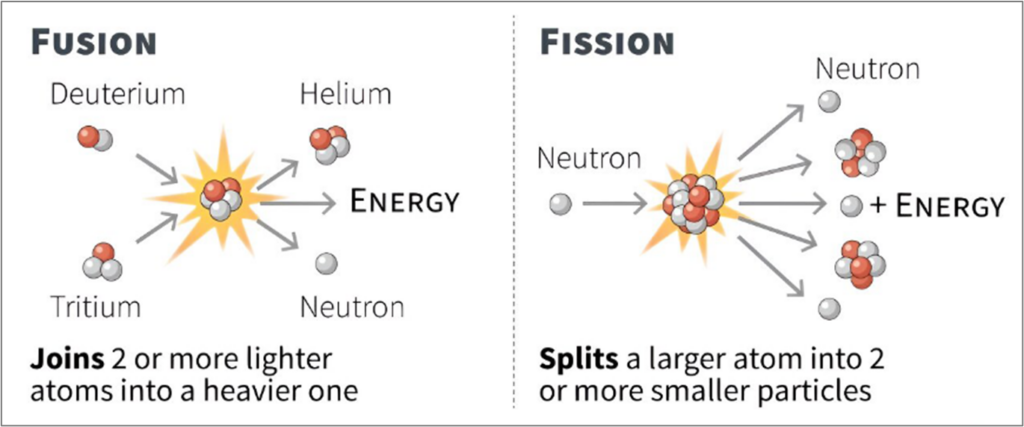From Sunbeams to Power Plants: Unveiling the Promise of Nuclear Fusion

Replicating the solar process of nuclear fusion on Earth has been the holy grail of scientists for decades, and developments in Japan mark a crucial step towards making it a reality
The world held its breath a couple of months ago this winter, as Japan inaugurated the JT-60SA reactor, the largest operational superconducting tokamak fusion reactor in the world. This behemoth, a six-story testament to human ingenuity, represents a giant leap forward in the pursuit of a clean, sustainable energy source: nuclear fusion. Nuclear fusion supremacy is the ambition of major countries around the world specially China, which has an interesting collaboration and competition strategy.
China’s collaboration & competition strategy
China is a key contributor to the ITER project, the world’s largest fusion experiment under construction in France. It is also a major player in the global race to develop fusion energy, and their project landscape is quite diverse. Its major projects include:
- EAST (Experimental Advanced Superconducting Tokamak): Currently the world’s largest operating tokamak reactor, conducting important research on plasma confinement and stability.
- HL-2M (Highly Conductive Tokamak Experiment Upgrade): Achieved record plasma current of 1 million amperes in H-mode (high-confinement mode), a major step towards efficient energy production.
- CFETR (China Fusion Engineering Test Reactor): A proposed next-step tokamak reactor aiming to demonstrate the scientific feasibility of fusion power generation. Construction is planned for the 2020s.
Geopolitical implications
The development and potential success of JT-60SA have interesting geopolitical implications to consider, which touch upon aspects of:
- International Collaboration:
- Partnership: JT-60SA is a major collaborative effort between Japan and the European Union, representing a strong partnership in scientific and technological advancement. It showcases the potential for cooperation on a global scale to face energy challenges.
- Competition: While collaboration exists, concerns about potential technological dominance might arise if one nation achieves fusion energy first. However, the complex nature of fusion necessitates international cooperation for success.
- Energy Security:
- Clean and abundant energy: Fusion promises a secure and clean energy source, reducing dependence on fossil fuels and geopolitically unstable regions. This could strengthen energy independence and reduce potential conflicts over resources.
- Intellectual property: Sharing of advancements and intellectual property between nations will be crucial for optimal development and potential equitable access to this resource.
- Technological Leadership:
- Economic implications: The first nation to achieve commercially viable fusion could gain significant economic and technological leadership. This raises questions about fair access to the technology and its benefits.
- Military concerns: Fusion technology might have potential military applications. International collaboration and transparency could help mitigate potential arms race scenarios.
- Environmental Impact:
- Global response to climate change: Successful fusion development could accelerate the transition to clean energy, aiding in global efforts to combat climate change and its geopolitical consequences like resource scarcity and migration.
- Resource sharing: Access to the raw materials needed for fusion might raise new geopolitical considerations, requiring responsible and equitable resource management.
Overall, JT-60SA and future fusion advancements will likely have significant geopolitical implications. While fostering international collaboration and addressing potential concerns are crucial, the potential benefits for energy security, climate change mitigation, and economic development are substantial.
Harnessing the powers of the Sun
While fusion might sound like science fiction, it’s the very process that powers the sun – two atomic nuclei fusing into a heavier element, releasing immense energy in the form of light and heat. Replicating this process on Earth has been the holy grail of scientists for decades, and the JT-60SA marks a crucial step towards making it a reality.

Image: Fusion vs Fission – Both nuclear reactions produce massive energy, but the processes are different; Source: US Energy Dept; Duke Energy; EIA
So, what makes fusion so special? Compared to conventional nuclear fission, it boasts several advantages:
- Nearly Limitless Fuel: Forget dwindling uranium reserves. Fusion fuels – deuterium and tritium – are readily available from seawater, offering a practically endless supply.
- Clean and Green: Unlike fission, fusion doesn’t generate greenhouse gasses, making it a powerful weapon in the fight against climate change.
- Inherently Safe: Imagine a nuclear reactor that shuts down automatically upon damage. Fusion offers that inherent safety, eliminating the fear of catastrophic meltdowns like Chernobyl or Fukushima.
- Minimal Waste: Unlike fission’s highly radioactive byproducts, fusion produces primarily helium, a harmless gas.
Great challenges
But with great potential comes great challenges. Achieving net energy gain – producing more energy than consumed – has remained elusive. The JT-60SA aims to tackle this by creating and sustaining plasma at a scorching 200 million degrees Celsius, hotter than the sun’s core! This plasma, confined by powerful magnetic fields within the donut-shaped tokamak, is the crucible where fusion magic happens.
The JT-60SA isn’t alone in this quest. It’s a collaborative effort between the EU and Japan, serving as a precursor to the even larger ITER reactor under construction in France. Both projects share the ultimate goal: demonstrating sustained net energy gain and paving the way for commercial fusion power plants.
However, the road to fusion energy isn’t smooth. Technical hurdles abound, from maintaining the extreme conditions within the reactor to developing materials that can withstand such harsh environments. Additionally, the sheer cost of building and operating these behemoths is a significant concern.
Despite the challenges, the JT-60SA’s inauguration sparks hope. It’s a testament to the unwavering spirit of international collaboration and scientific exploration. And with every scientific breakthrough, the dream of abundant, clean, and sustainable fusion energy inches closer to reality.
This journey isn’t just about generating electricity. It’s about securing a cleaner, more sustainable future for generations to come. It’s about harnessing the power of the stars, right here on Earth. The JT-60SA might be just the beginning, but its fiery heart holds the promise of illuminating a brighter future for all.


